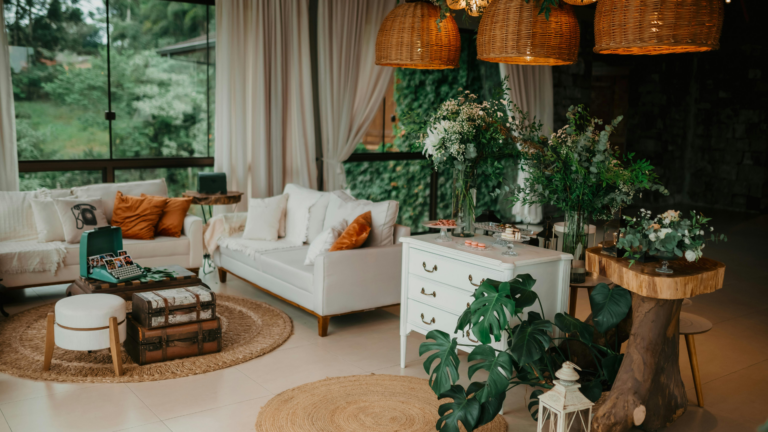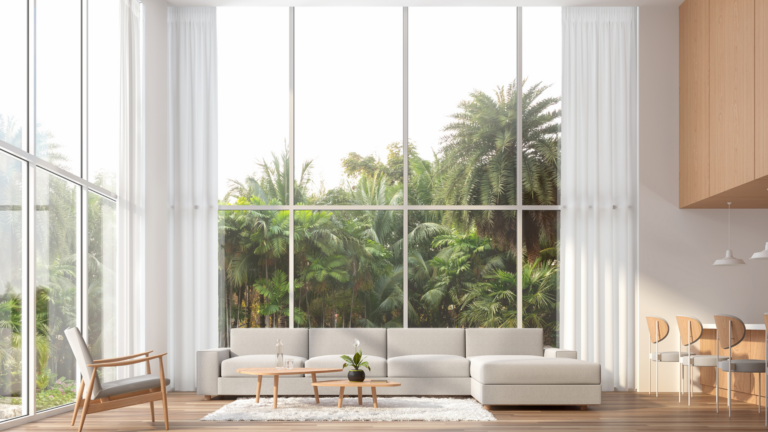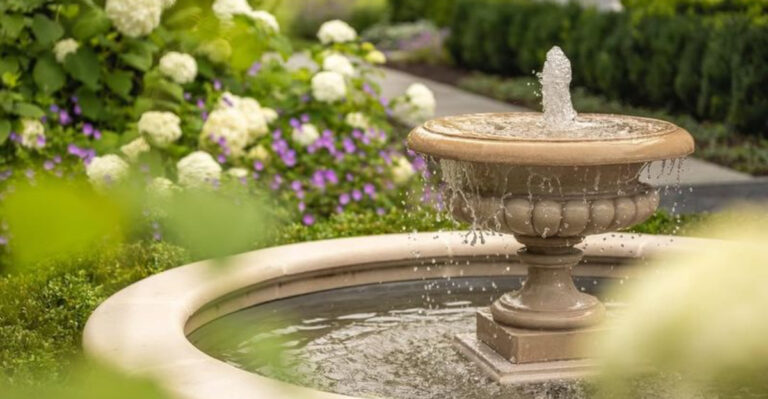17 Expert Tips On How To Choose The Perfect Dining Room Rug
Your dining room rug isn’t just a floor covering – it’s the foundation that ties your entire eating space together. Finding the perfect rug can transform your dining area from merely functional to absolutely stunning.
Whether you’re starting from scratch or refreshing your current setup, these expert tips will guide you through selecting a rug that balances style, practicality, and comfort.
1. Size Matters Most
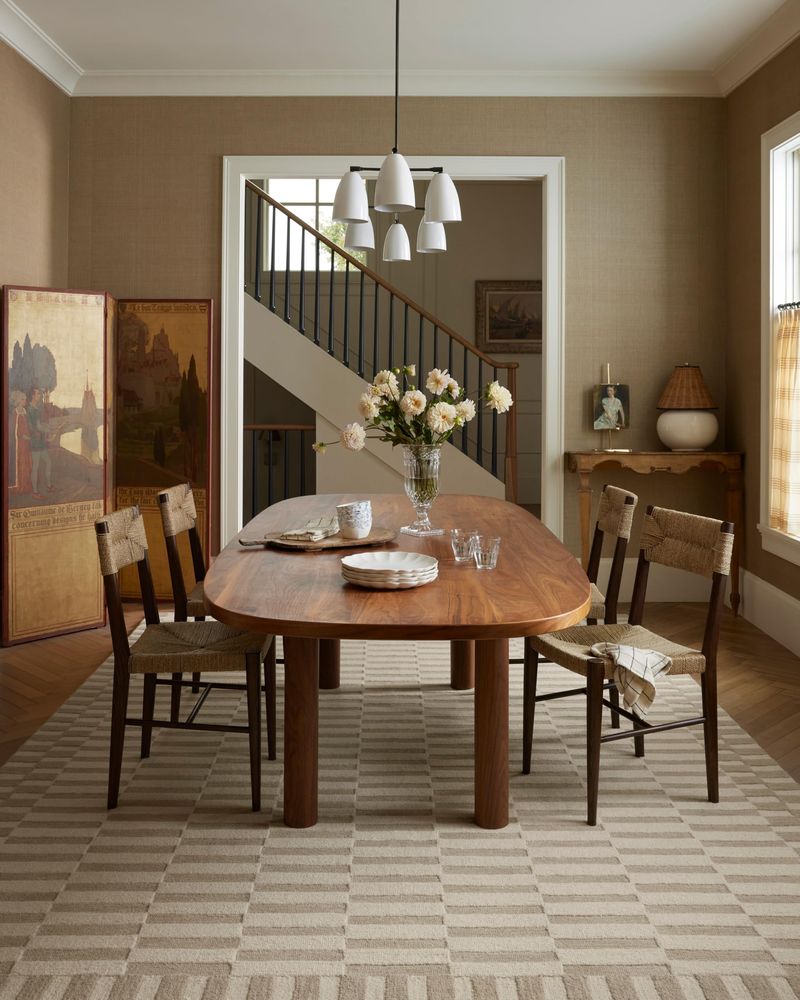
When hunting for the ideal dining rug, bigger is usually better! The rule of thumb is simple: your rug should extend at least 24 inches beyond each side of your table.
This generous border ensures chairs remain on the rug even when pulled out. Nothing ruins a dinner party faster than chair legs catching on rug edges as guests try to sit down!
2. Match Your Table Shape
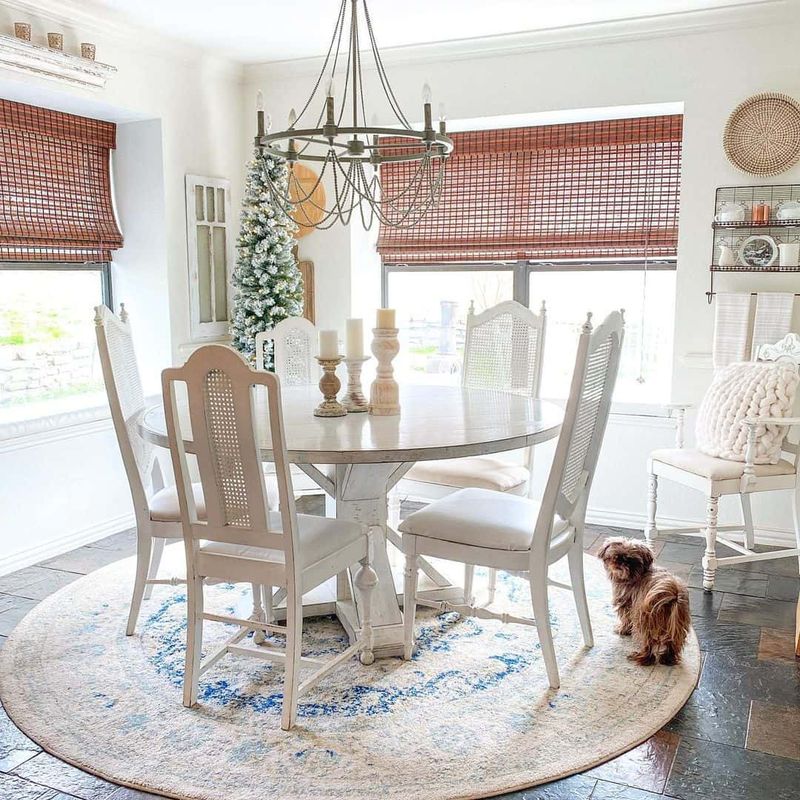
Harmony between shapes creates visual magic in your dining space. For rectangular tables, rectangular rugs create clean, parallel lines that please the eye.
Round tables call for circular rugs that echo their curved silhouette. Got a square table? You guessed it – a square rug maintains that satisfying symmetry. The matching shapes create a cohesive look that feels intentionally designed rather than randomly assembled.
3. Material for Your Lifestyle
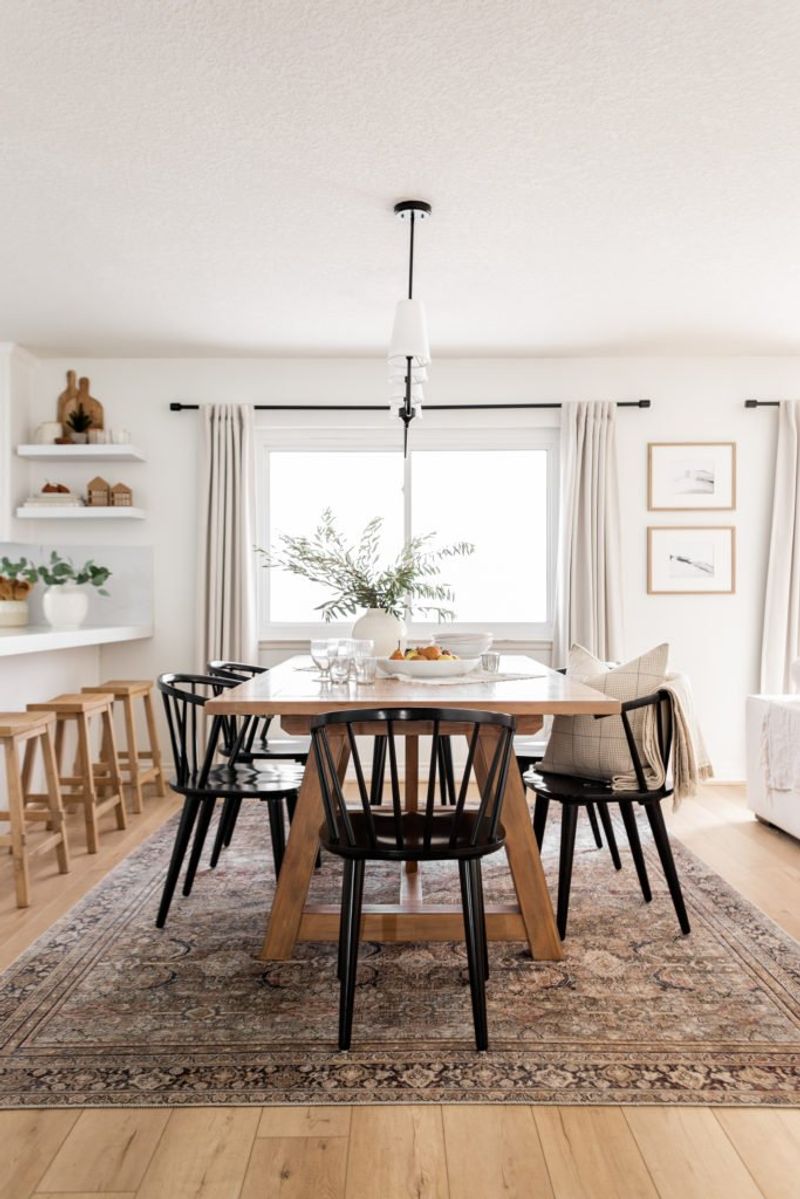
Family homes with small children might regret that cream-colored silk masterpiece after the first spaghetti night! Instead, consider durable synthetics or wool blends that withstand regular cleaning.
For formal dining rooms used mainly for special occasions, you can splurge on that luxurious silk or delicate pattern. Pet owners should look for tight weaves that resist claw snags and materials that don’t show fur. Your lifestyle should dictate your material choice!
4. Consider Maintenance Requirements
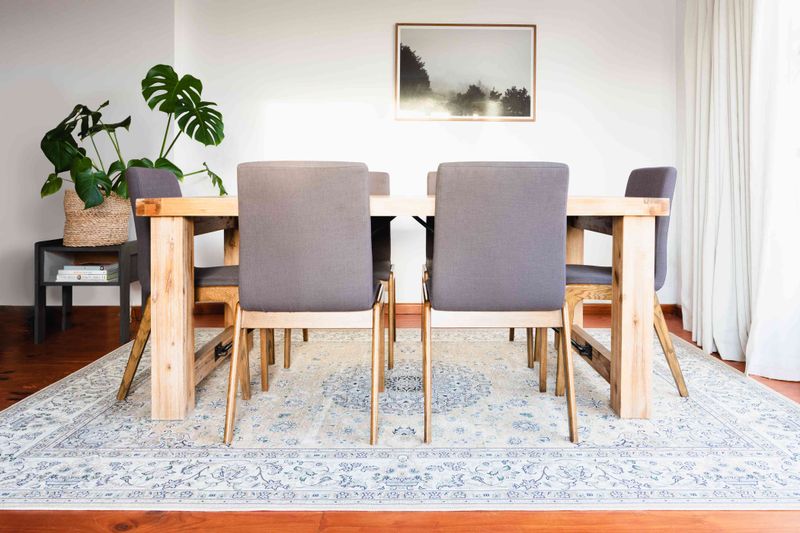
Before falling in love with that gorgeous high-pile shag, ask yourself: “Am I ready for the vacuum wrestling matches this will require?”
Flat-weave rugs like dhurries and kilims make cleanup a breeze – just a quick vacuum pass and you’re done. Some synthetic options can even be hosed off outdoors! Natural fibers like jute offer textural interest but might trap crumbs in their weave. Be honest about your cleaning habits before committing.
5. Pattern Personality
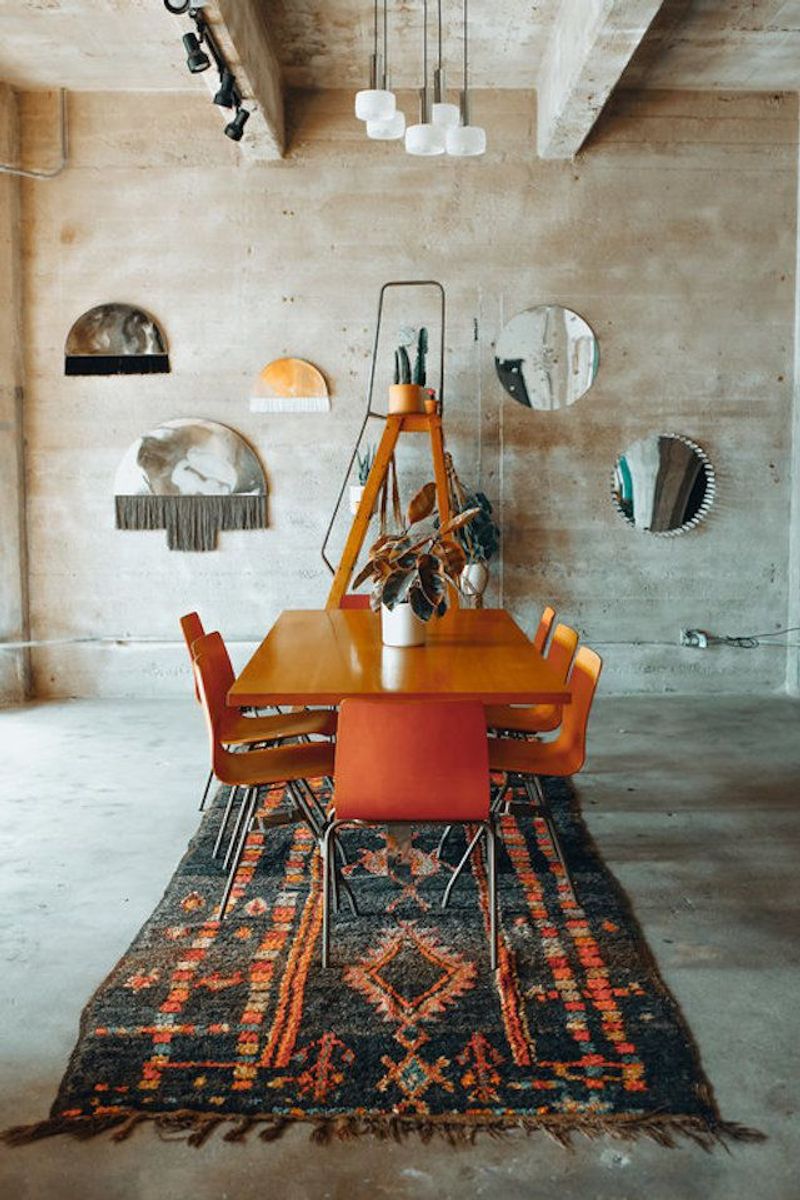
Feeling adventurous? A bold geometric or vibrant floral pattern can become the star of your dining room, injecting personality and conversation starters.
Remember that busy patterns hide stains better – a secret weapon for households where spills happen regularly! Your rug pattern sets the tone for the entire room.
6. Color Coordination Strategies
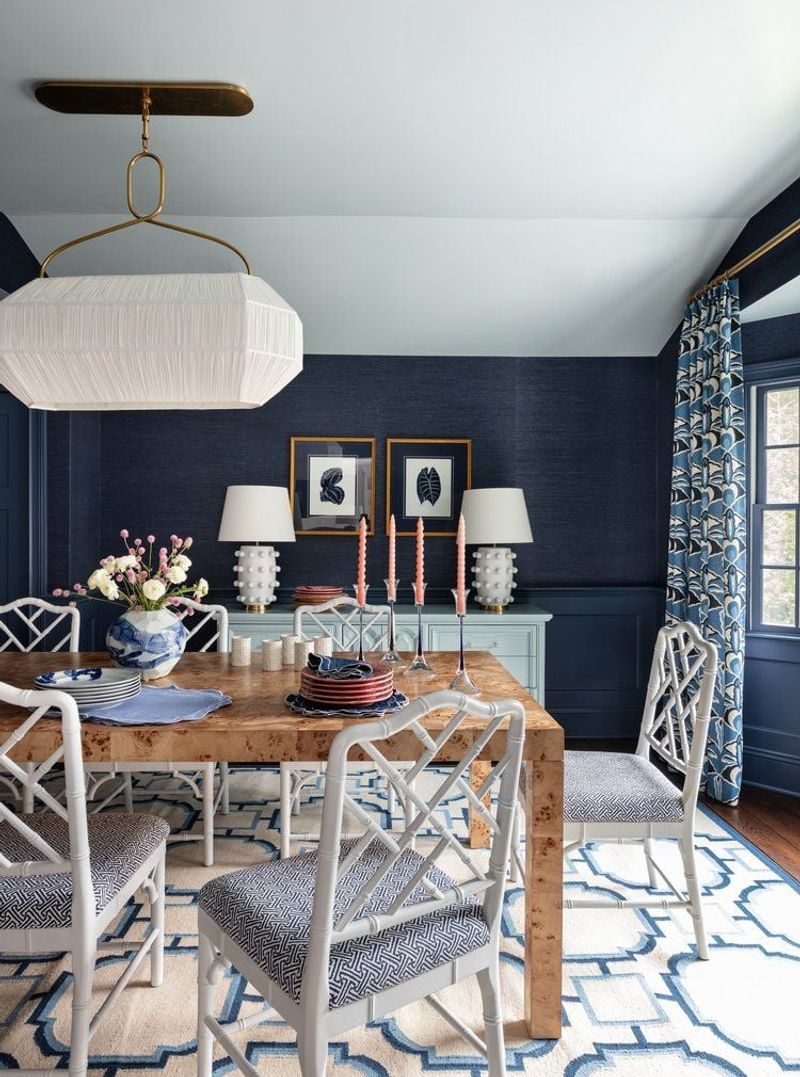
Stuck on color choices? Look up! Wall colors, artwork, and even your dining chairs can inspire the perfect rug palette.
To achieve the timeless appeal, select a rug with colors that appear elsewhere in your room – perhaps pulling from accent pillows or curtains. Don’t match exactly; aim for complementary tones. Neutral rugs provide versatility for seasonal decor changes, while colorful options make stronger statements. Your color choice anchors the entire dining experience.
7. Pile Height Practicalities
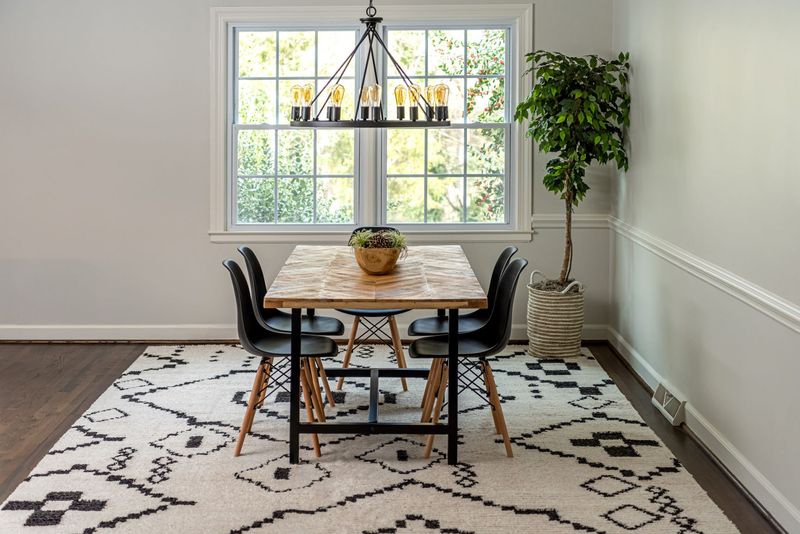
Have you ever tried sliding a chair over a super plush rug? It’s like pushing through quicksand! For dining areas, low-pile rugs (under ½ inch) prove far more practical.
They allow chairs to move easily and create fewer tripping hazards. Flat-weave options work wonderfully for wheelchair accessibility too. Reserve those lusciously thick high-pile rugs for spaces where you don’t need to frequently move furniture. Function should guide your pile height decision.
8. Budget-Friendly Alternatives
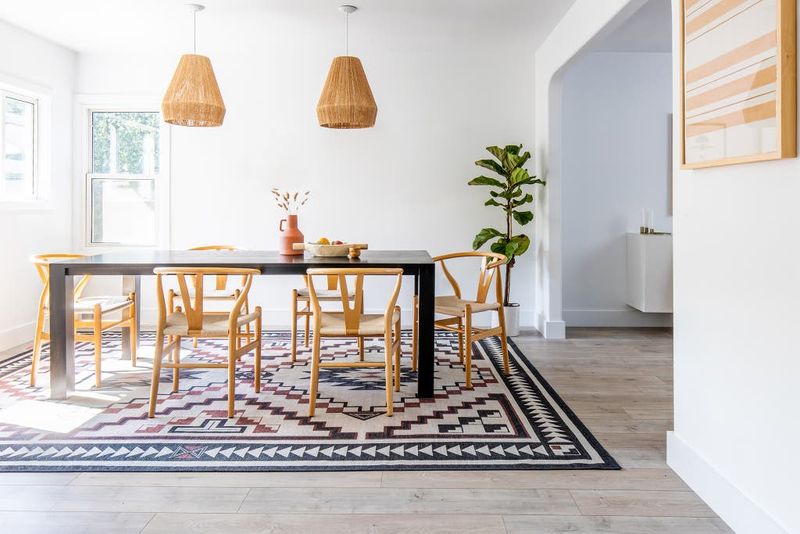
Who says stunning dining spaces require emptying your wallet? Indoor/outdoor rugs offer remarkable durability at lower price points – perfect for high-traffic dining areas.
Vintage-inspired printed rugs deliver designer looks without custom price tags. Consider layering a smaller statement rug over a larger, inexpensive natural fiber base. Seasonal sales and outlet shopping can score you premium rugs at significant discounts. Smart shoppers know where to splurge and where to save!
9. Seasonal Switching
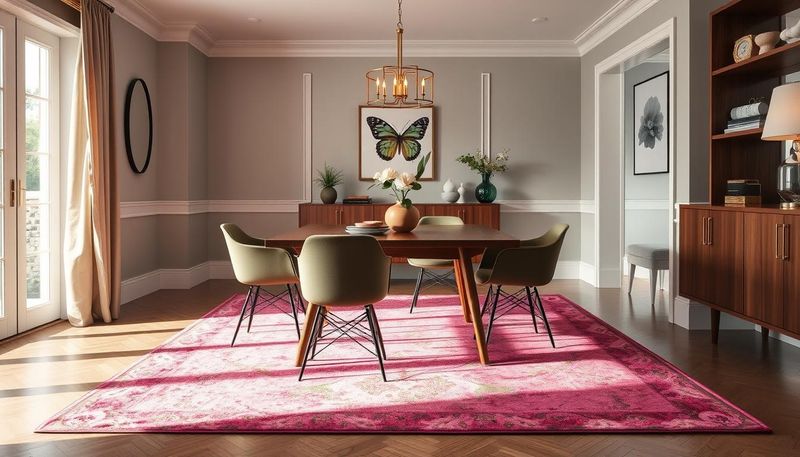
Imagine transforming your dining space with the changing seasons – lighter, breezier rugs for spring/summer and cozier textures for fall/winter.
If storage allows, consider investing in two moderately priced rugs rather than one expensive option. Natural fibers like sisal and seagrass create airy summer vibes, while wool brings warmth for winter gatherings. This approach freshens your space twice yearly without redecorating everything! Seasonal switching keeps your dining room feeling current.
10. Traffic Flow Awareness

Mapping your room’s movement patterns might sound overly analytical, but it’s dining rug wisdom 101! Notice where people naturally walk – from doorways to table, table to kitchen, etc.
Position your rug to accommodate these paths, avoiding awkward half-on, half-off stepping. For busy thoroughfares, darker colors and patterns disguise wear patterns better than light solids. Some designers even use rugs intentionally to direct traffic flow through a space.
Strategic placement enhances both function and longevity.
11. Underlayment Essentials
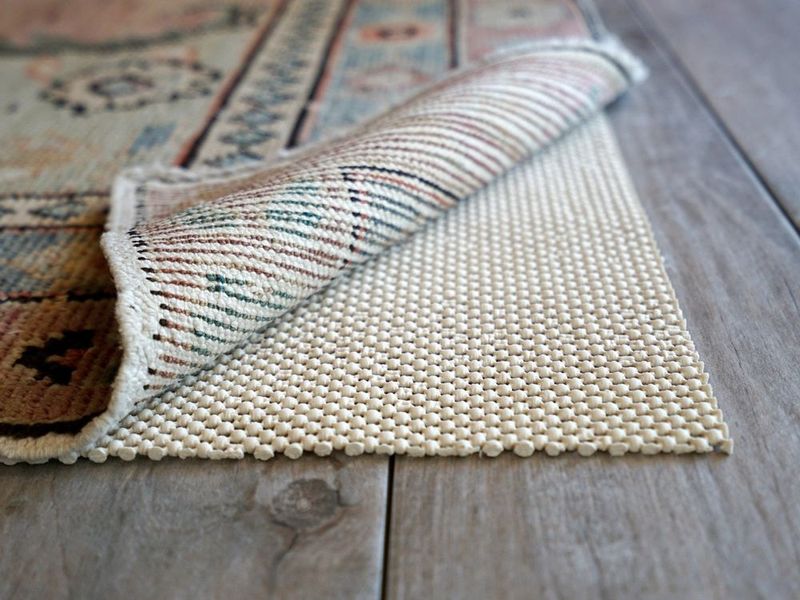
The unsung hero of dining room rugs? A quality rug pad! This invisible layer prevents slipping, adds cushioning, and significantly extends your rug’s lifespan.
Rubber-backed options provide excellent grip on hard floors. Natural fiber pads allow your rug to breathe, preventing mildew in humid climates. This small investment delivers major returns in safety and rug longevity.
12. Allergen Considerations
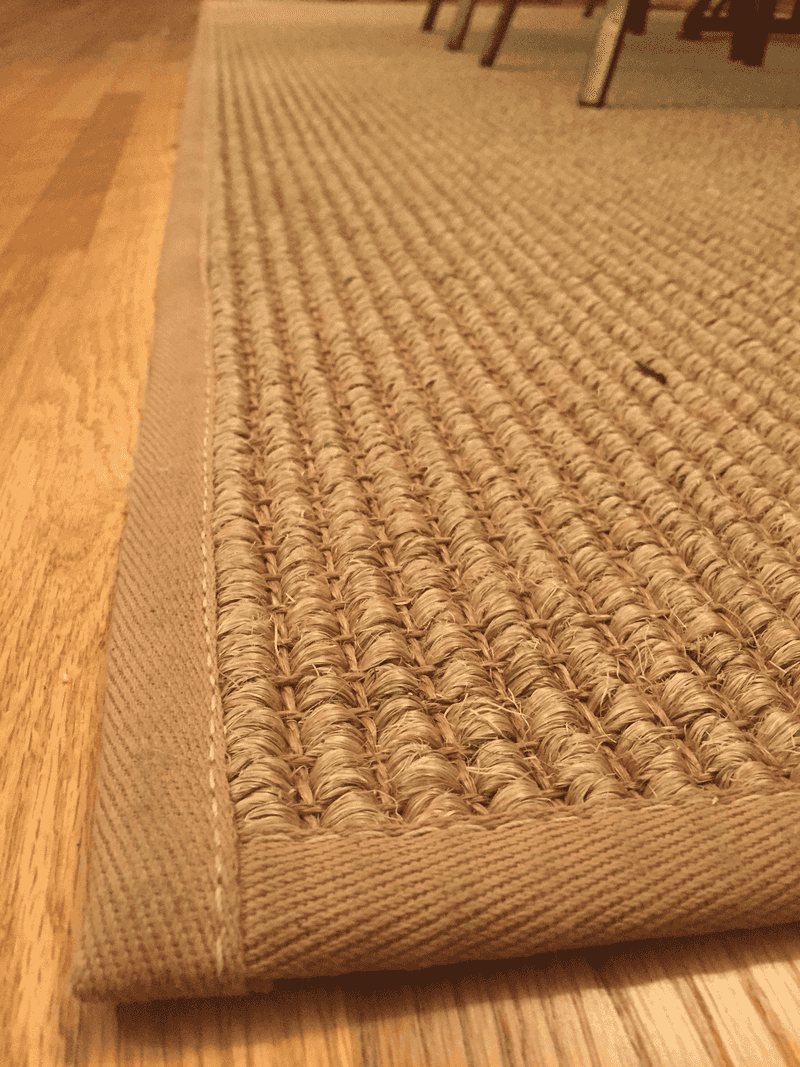
Achoo! If household allergies are a concern, your rug choice becomes even more important. Synthetic materials typically harbor fewer allergens than natural fibers.
Low-pile options collect less dust than their shaggier counterparts. Some rugs now come with antimicrobial treatments that inhibit mold and mildew growth. Most importantly, choose rugs that can be regularly and thoroughly cleaned – whether at home or professionally. Breathe easier with allergy-friendly dining room rugs!
13. Lighting Relationship
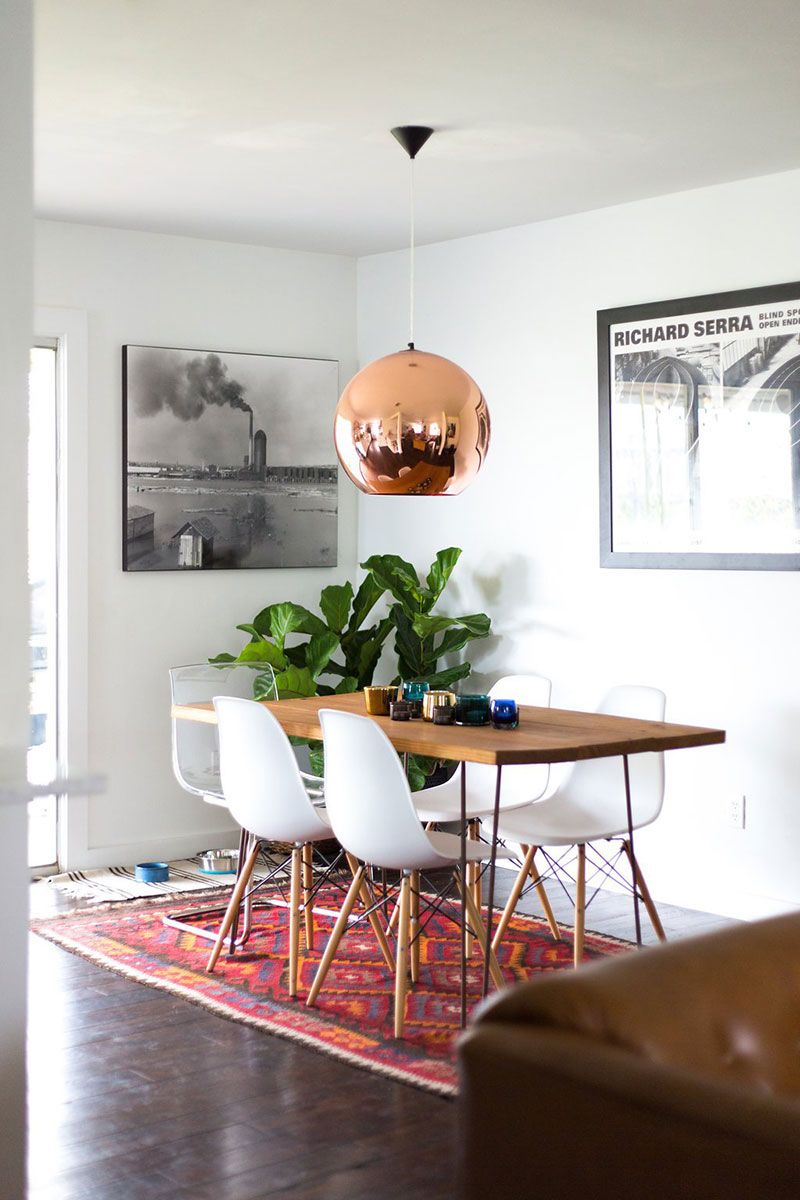
Ever noticed how colors shift dramatically under different lights? That gorgeous burgundy rug from the store might look brown under your dining room chandelier!
Always test rug samples in your actual space, viewing them during different times of day. Dark rugs absorb light, potentially making rooms feel smaller, while light-colored options reflect illumination and brighten spaces. Metallic threads or lustrous materials can create beautiful interplays with pendant lighting above dining tables.
14. Protection Strategies
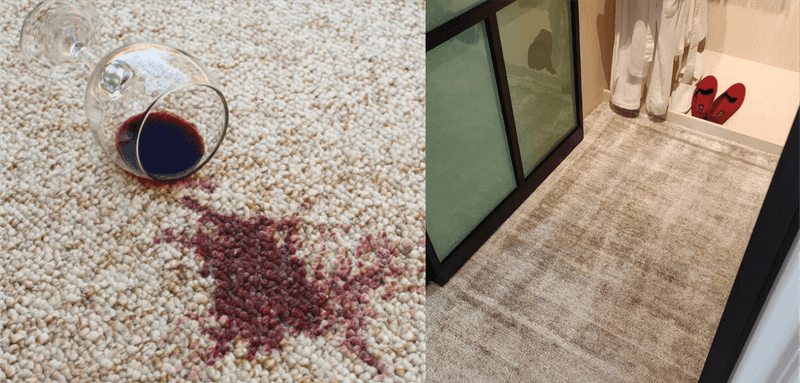
Let’s face reality – dining rooms witness countless spills, drops, and oopsies. Preparing for inevitable accidents will extend your rug’s beauty for years.
Consider professional stain protection treatments for natural fiber rugs. For maximum protection, look into indoor/outdoor options that resist staining naturally. Some homeowners even use clear chair mats at the most vulnerable spots. Regular rotation spreads wear evenly across your rug, preventing premature aging in high-use areas.
15. Cultural Influences
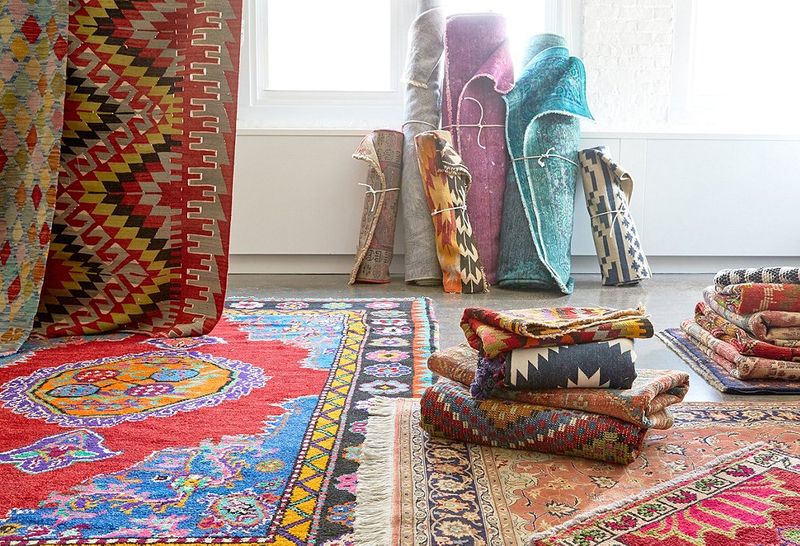
Around the world, different cultures have developed distinctive rug traditions that bring unique character to dining spaces. Persian and Oriental rugs add timeless sophistication with their intricate patterns and rich history.
Moroccan designs introduce geometric boldness and vibrant energy. Scandinavian flat-weaves offer minimalist appeal with subtle patterns. These cultural styles do more than decorate – they tell stories and create atmosphere. Embracing global influences can transform ordinary meals into transportive dining experiences.
16. Layering Techniques
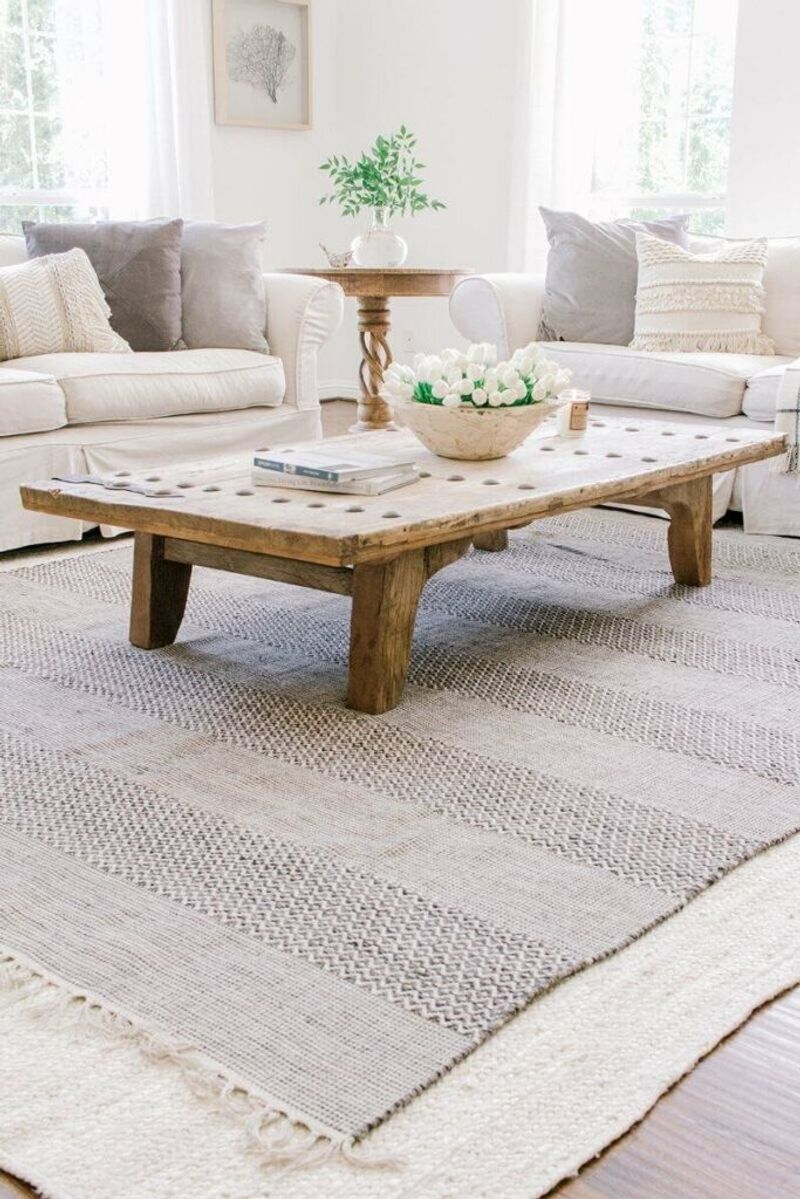
Why settle for one rug when you can have two? Layering has become a designer favorite for adding depth and interest to dining spaces.
Try a smaller, more expensive statement rug centered over a larger, neutral base. This technique allows you to incorporate pricier rugs in smaller sizes – budget friendly and visually striking! Contrasting textures create especially rich effects: think sleek cowhide over natural jute, or vintage Persian atop sisal.
17. Future-Proofing Your Choice
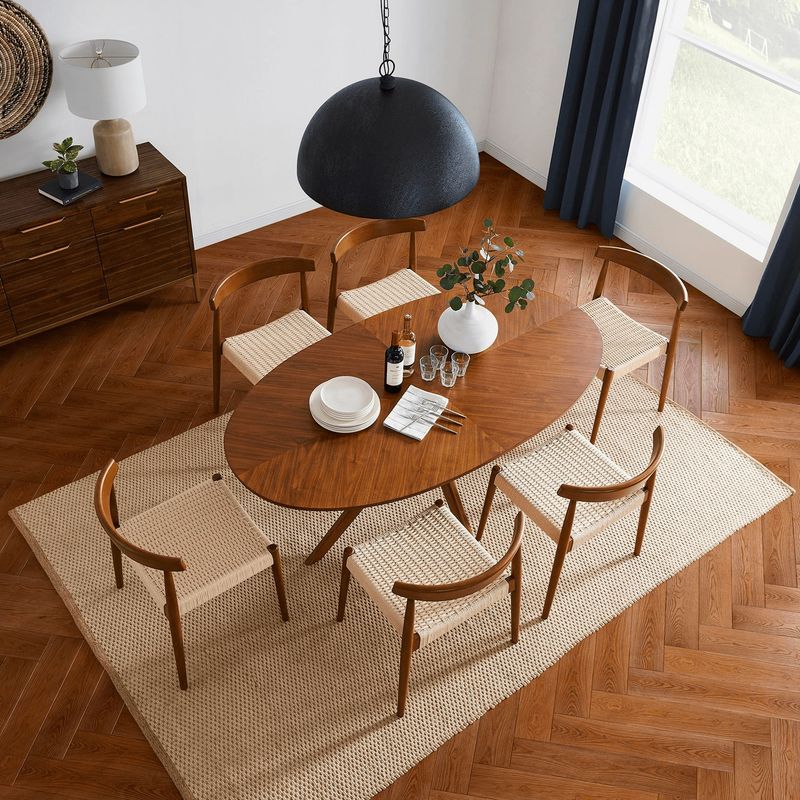
Trends come and go faster than dinner guests, but your rug investment should last for years. Leaning toward timeless designs over ultra-trendy patterns ensures longer-term satisfaction.
Consider how your taste has evolved over the past decade as a predictor of future preferences. Classic patterns, natural materials, and heritage-inspired designs typically age gracefully. If you adore current trends, incorporate them through smaller, less expensive accessories rather than your foundation rug. Wise selections grow more beautiful with time.



